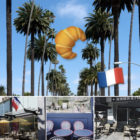
Joshua Tree and stargazing go hand in hand. Not only has Joshua Tree been recognized by the International Dark Sky Association, but thousands of people travel there every year just to see the stars at night.
My dad is an astronomy enthusiast. My first astronomy memory was seeing the moon for the first time in the late 90s through his telescope. We also went to a very average stargazing tour in Julian (San Diego) back in 2017, and if this isn’t enough, he has the moon as his profile picture on Whatsapp!
I live in LA, but I visit Joshua Tree several times a year. In January 2024, after watching the sunset inside the park, I drove back to my Airbnb. It was pitch-black very early in the afternoon. While still in the park, I pulled over to the side of the road and stepped out of the car to a starry night sky.
I was completely awestruck by what seemed to be tiny particles of diamond with a faint haze scattered around the black sky.
There were so many feelings that ran through my head: admiration, wonder and curiosity. Stargazing is a great way to practice mindfulness because you’re fully present.
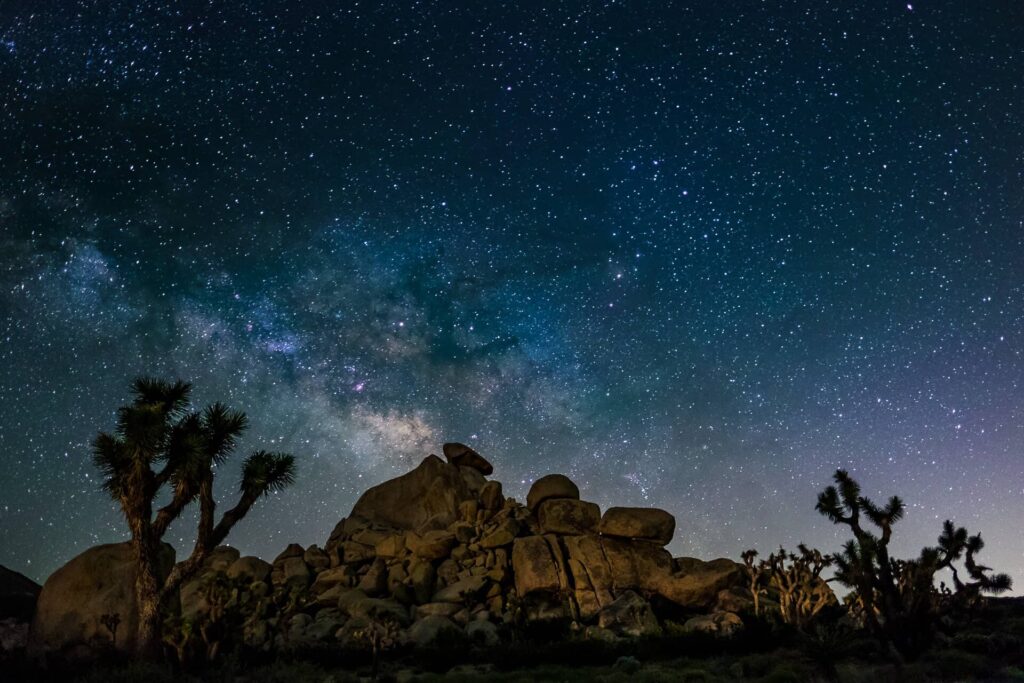
There are many stargazing places around the world, but watching the stars surrounded by the vastness of the desert and rock formation silhouettes was a very unique experience.
Although you can stargaze anywhere in the park for free, nothing compares to seeing the stars with a professional astronomer. Joshua Tree has no shortage of stargazing tour companies, but this one in particular stands out for many reasons!
Founded by Matthias Schmitt, Hannah Barry, Kramer Ditty and Adam Freeman, Stargazing JT is the sister company of Stargazing Zion in Utah. Followed by the success of Stargazing Zion, the team opened Stargazing JT in November 2023. This location is run by Devon Salasin, who is also the head astronomer. Although Devon is now based in Joshua Tree, she occasionally does guided tours in Zion.
I had the pleasure of interviewing Devon a few months ago for the article “Life in Joshua Tree – As Told by its Residents”, where she shared her favorite things about living in Joshua Tree.
In June, I went back to Joshua Tree, where Devon was nice enough to offer me a complimentary tour. A few hours before the tour started, I interviewed her at Frontier Cafe.

Hello Devon! What’s the breakdown of the tour?
The tour usually starts about 30 minutes to an hour after sunset. It begins before it’s completely dark. The stars come out as the tour goes on. The first 30-ish mins is a short walk with an accurate scale model of the solar system. We stop at each planet and we hear about facts about each planet. Then, we arrive at the observation site, where we talk about space and time. We talk about the scale of the universe, how big things are and how old the universe is. We bring that into perspective.
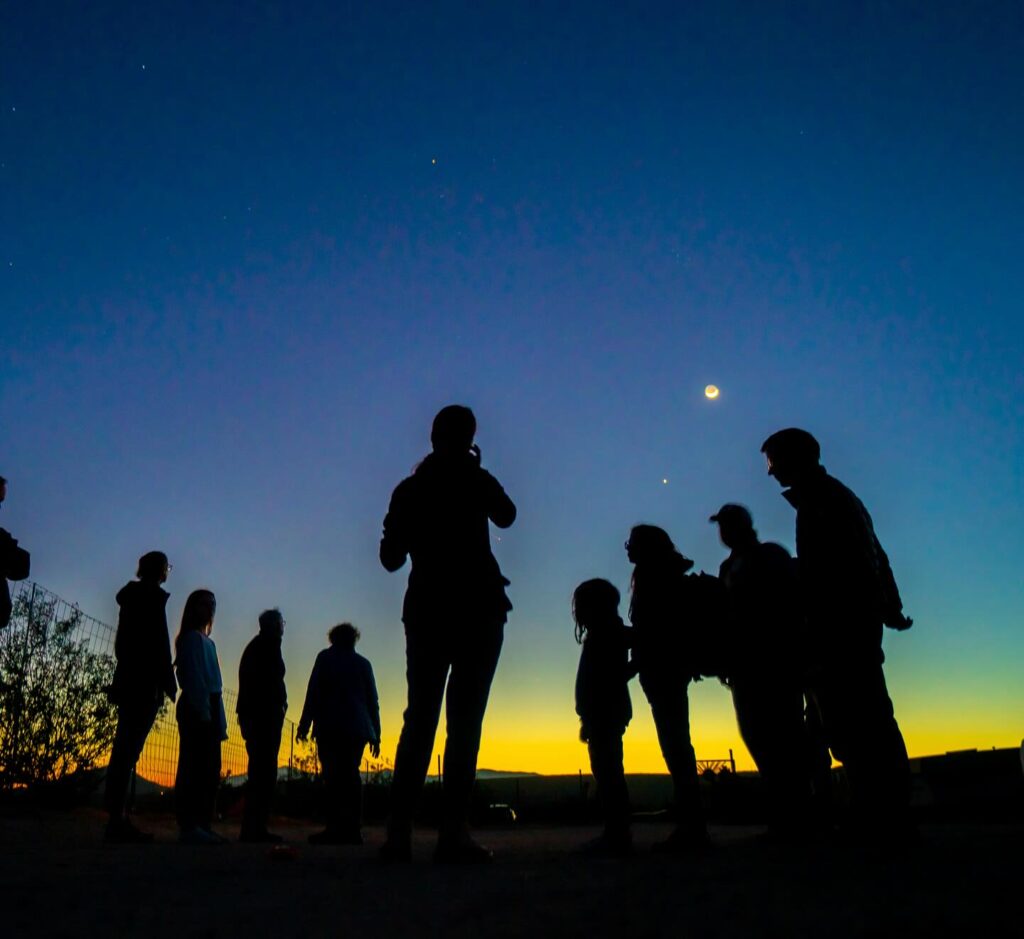
After that first talk, you lay on these very comfortable lounges. I call them adult bean bag chairs, they’re super comfortable. We provide binoculars, blankets, and beverages, like hot chocolate and tea. Then we stand up for the first round of the telescope. We usually have 4-6 telescopes. There’s one type of telescope that we have called Enhanced Vision digital telescope. They’re awesome. There are some faint, far-away objects, where you don’t get to see that much detail in your traditional telescope. But these new telescopes give you long-exposure pictures of the galaxies and you can actually see something.
The telescopes look so modern and advanced! Can you tell me more about them?
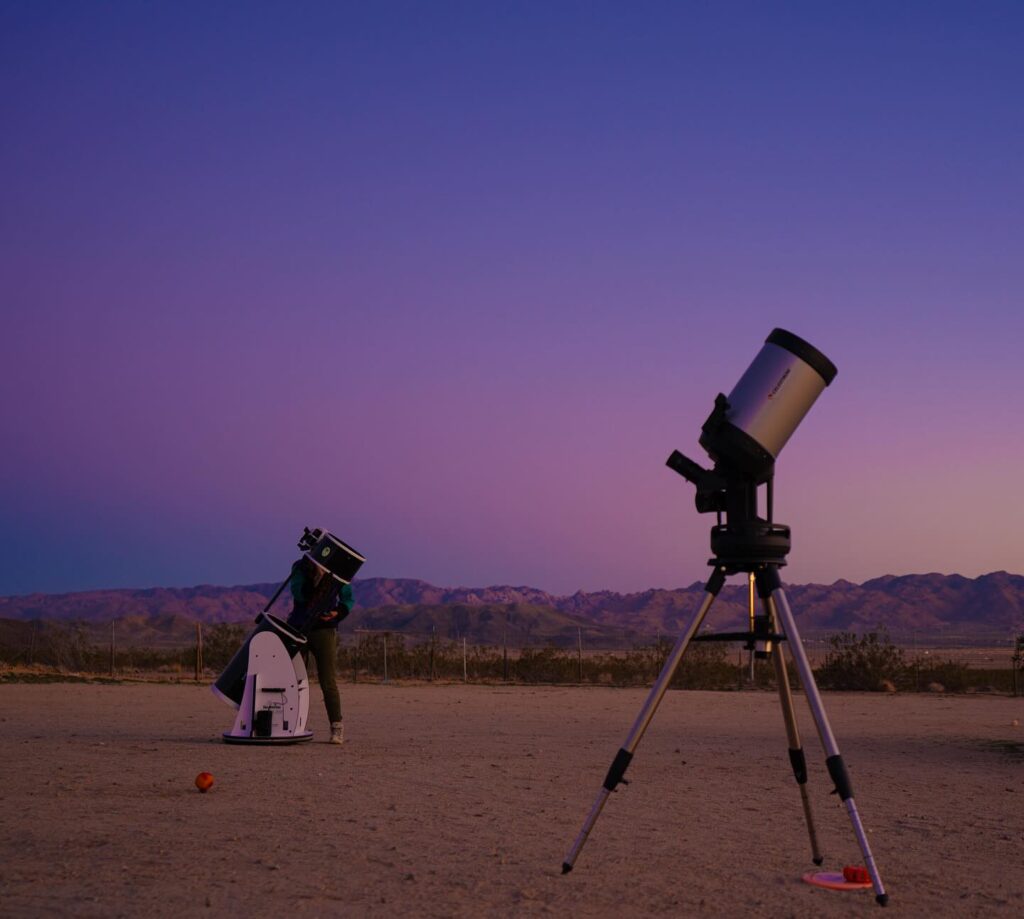
Our big telescopes are the traditional optical ones. What you see is what you get. The digital telescopes offer you stacked images.
We have two traditional ones that we use for closer and brighter things, like planets, the moon, and sometimes double stars.
The digital telescopes are the smaller ones and the most expensive. From those, we look at huge star clusters, galaxies and all different kinds of nebulas. Because they’re stacking the images, we send you the photos after the tour.
Note: The telescopes used on the tour are:
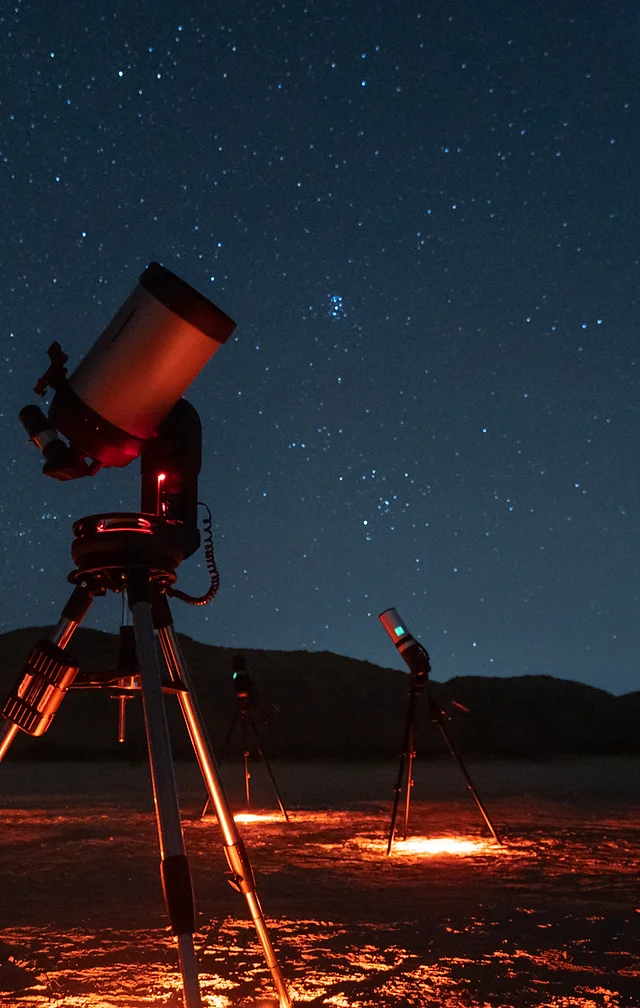
Digital enhanced vision: Link here
Celestron 8″: Link here
Skywatcher dobsonian 12″: Link here
What makes Stargazing JT different from other stargazing companies? There are quite a few here.
Yes, they’re quite a few and we’re the new players on the block. What sets our experience apart from other stargazing experiences is the knowledge you get. We have high-power laser pointers that will draw out the constellations and point things out.
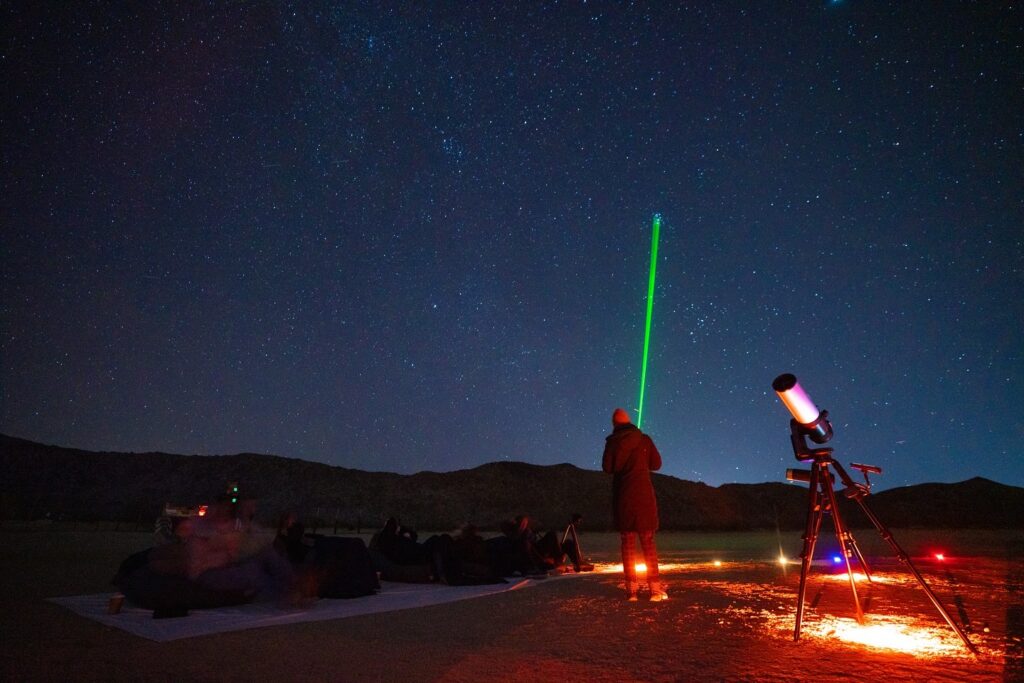

The stargazing is a big part of it, but you also get the highly educational scientific astronomy experience. Not only are you going to leave with knowledge of the night sky, but knowledge of the planet and the universe.
Our guides are well-trained to guide people. Your guide tonight, Caleb, just graduated from the University of Wyoming in astrophysics. I graduated from Penn State University in planetary science and astronomy. It’s a lot of information, but it feels fun. I’m very proud of our reviews. The guide has a good flow to it. Storytelling is an important part of being a good guide. We give people information without being overwhelming. You’re imparting understanding as opposed to spitting out a bunch of facts. It’s a good experience for all age levels. We’ve had people that worked for NASA that had a great time. A lot of people in the field are focused on research and facts, but they learn so much in our tours!
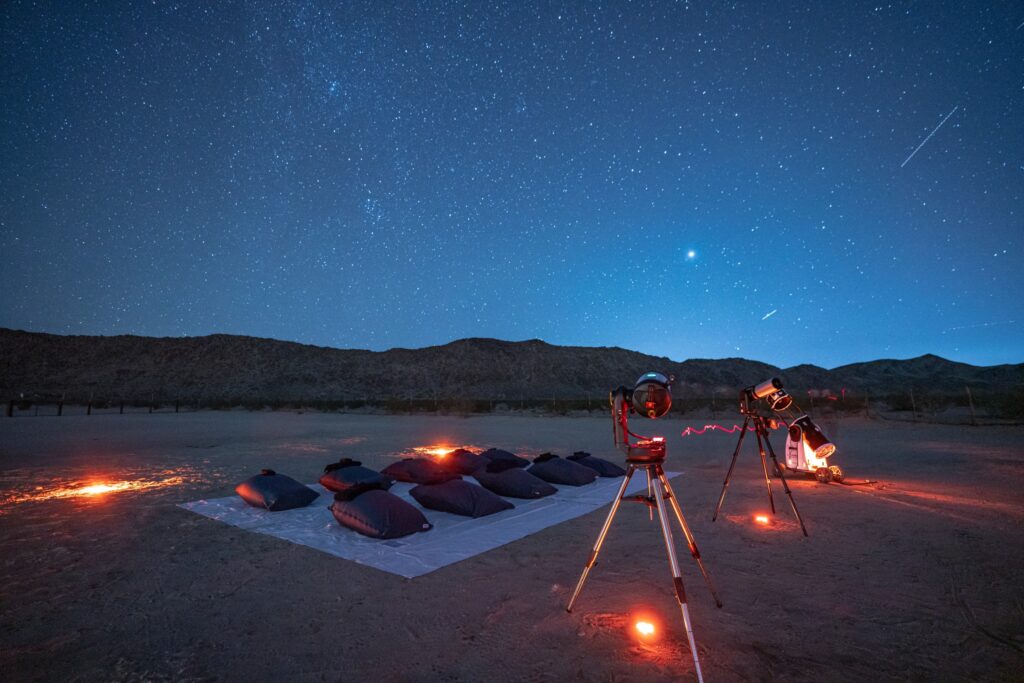
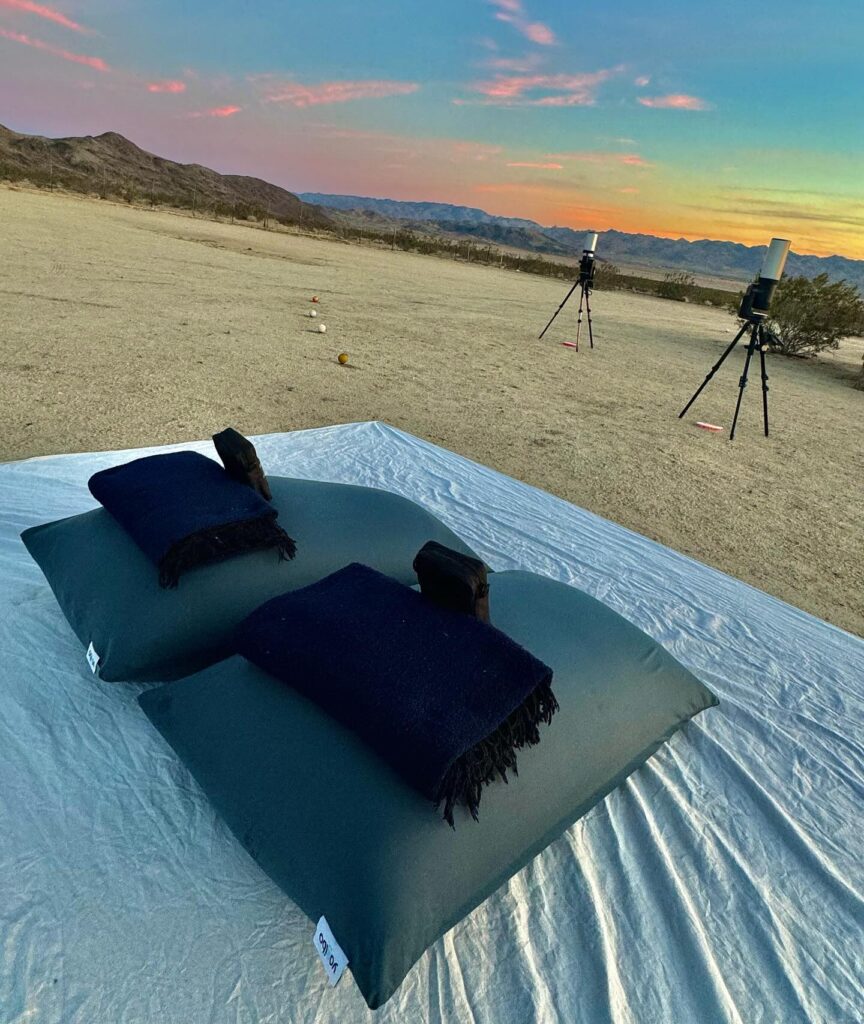
Where does your love of astronomy come from?
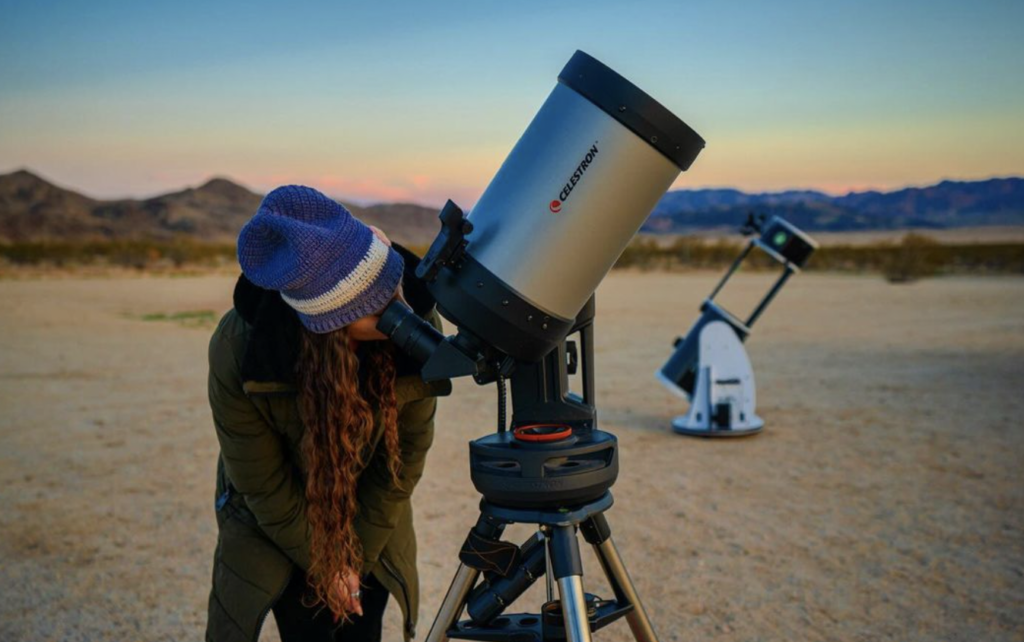
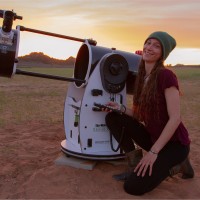
When I was 18 and the world asked me what I wanted to do with my life, I thought that space was the only thing that mattered. We’re so wrapped up in the world we’ve created: our 9 to 5, politics, war… It can be very heavy. I wanted to get away from that. I had a wider look when I was 18. What matters to me is interstellar travel, being able to survive in space, the preservation of the human race… The planet won’t be here forever. The only way is if we learn about space and if we learn about it properly. That’s why I got into astronomy. I wanted that outer world view of looking at things.
What are your favorite recommendations in Joshua Tree?
This is a great place, Frontier. I’m here often. They have good coffee and good vibes. There’s another one called Mas o Menos, it’s a very local vibe. I love going there with a latte and reading a book.

I also love going to Giant Rock Meeting Room for a pizza and a salad. But my favorite restaurant is Kitchen in the Desert in 29 Palms. It’s great for tapas and sharing, although one thing is enough for me. I love ordering the Veggie Bowl. It’s so simple, but so good! They also have a Szechuan noodle dish called Dan Dan. You can sit outside and enjoy the desert plans. It’s a beautiful place.
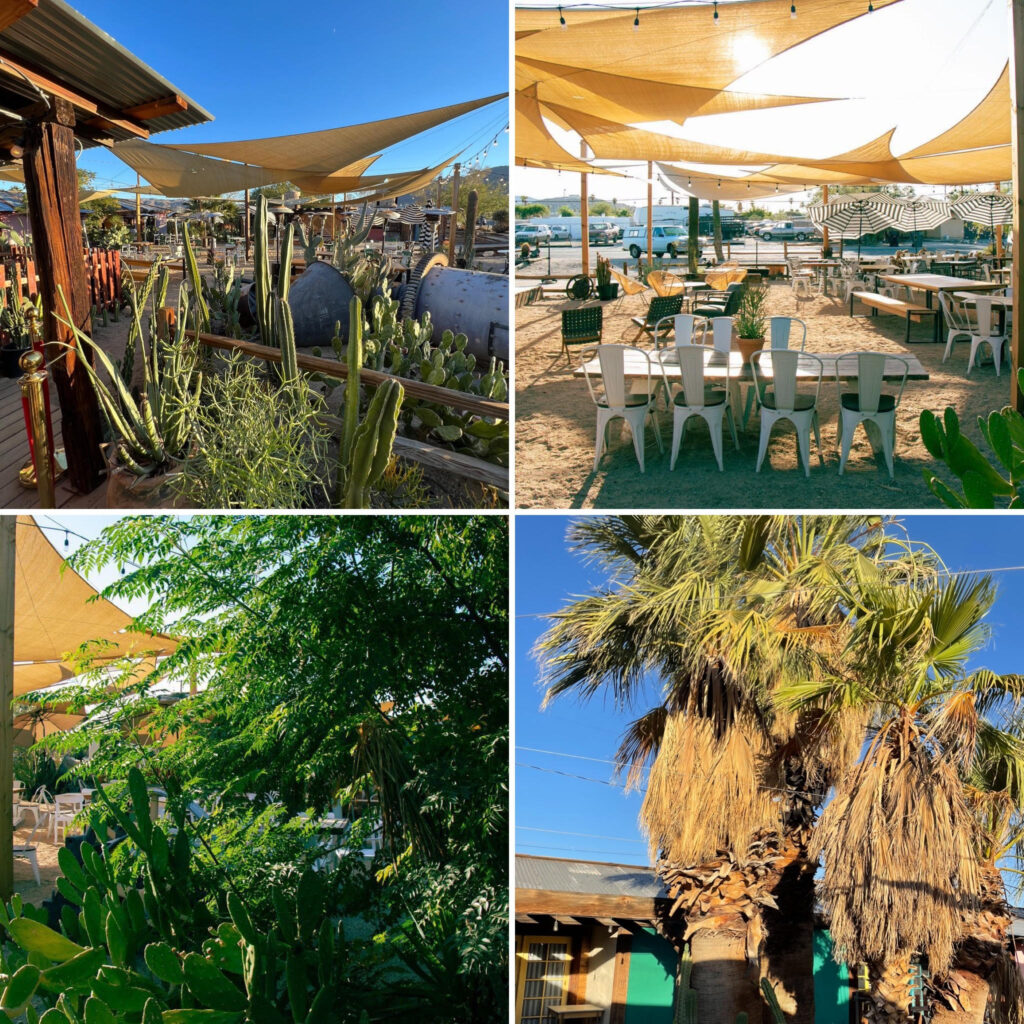
There’s a beautiful hike that I recently did called Panorama Loop Trail. It’s not too strenuous and has amazing views. I also love the Cholla Cactus Garden. It’s inside the park and located in the deepest and darkest part of the park, which is the Pinto Basin. This garden is known for its sunrises because they make the needles on the cholla cacti look fuzzy and glowy. If you want to wake up before the sun (I’m not that person, but to each their own), and enjoy dark stargazing before the sunrise, it’s great! I love that specific area of the park.
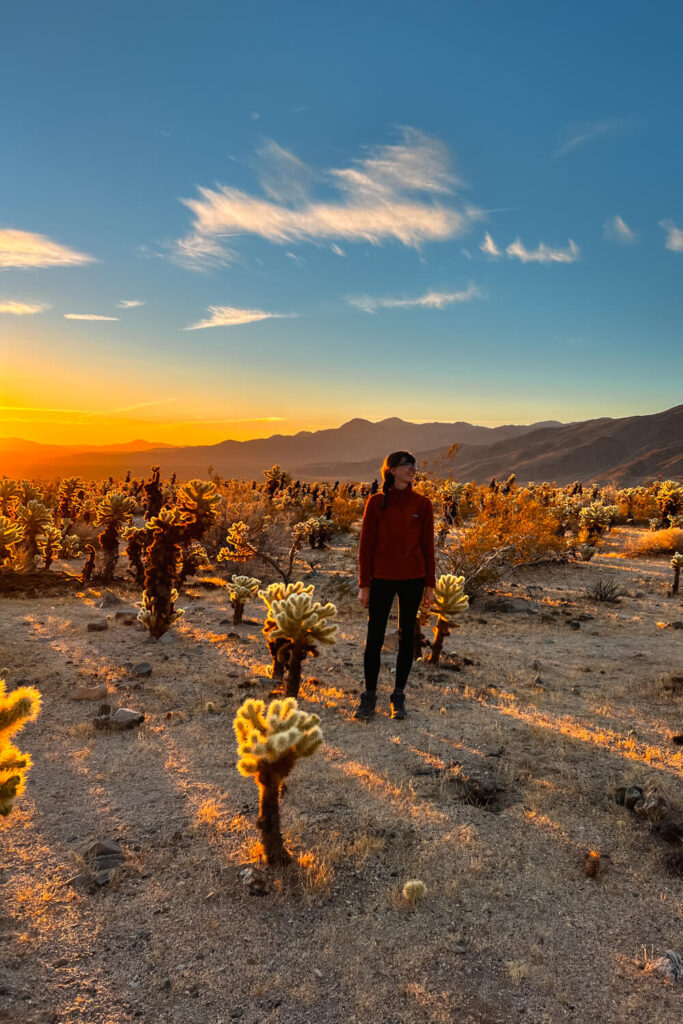
Has there been a special moment in your tours?
That’s a hard one because there are so many! About a couple months ago, there was a kid who was 4 years old and he knew so much! I love kids who have such passion and knowledge. I was astounded. Also, nothing beats watching somebody look at Saturn or a galaxy for the first time. Looking at the moon is life-changing. The moon is my personal favorite object to look at through the telescope. It’s such a beautiful view. Of course, nothing beats watching somebody looking at the moon for the first time. We had an older gentleman in Zion last year who teared up looking at Saturn for the first time.
Do you believe in life outside planet Earth?
Yes! There are around 300 hundred billion stars in the Milky Way galaxy. Even if the chance of life forming on a planet is one in a billion, it still leaves 300 life forms in our galaxy alone. There are hundreds of billions of galaxies in the universe. Statistically, it doesn’t make sense that we’d be alone. We haven’t heard from anybody yet! But the short answer is yes. Statistically, the sample size is huge.
My experience
The tour was held at Joshua Tree Lake Campground, where the Joshua Tree Music Festival takes place every year. In 2024, the festival was voted the best in the country!
After we parked our cars, we met with our guide, Caleb Eastlund, and Sydnee Hill, the photographer that night.
There was a long trail with small LED balls on the ground that led to the site. Each ball represented a planet from the solar system.
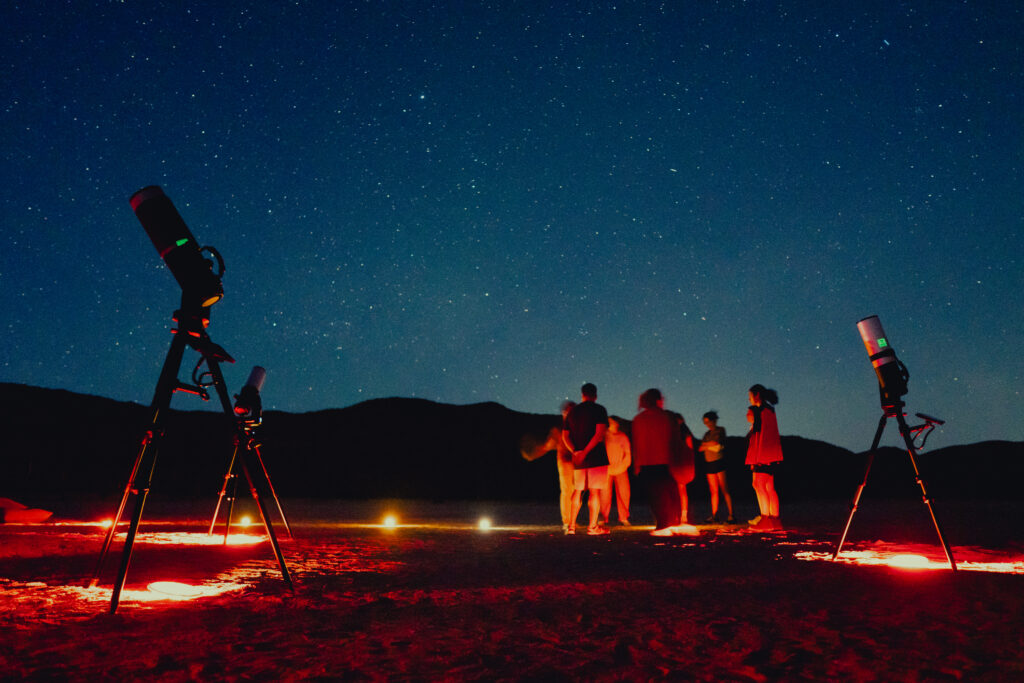
Caleb talked about the hostile environmental conditions on each planet. For example, if we were to live on Venus, our faces would look like blobfish, a fish with a funny face that withstands the pressure of the deep bottom of the ocean.
This is why, we should be grateful to planet Earth for providing us with the essential elements of life: water and oxygen. Caleb said that we needed to take care of her as she takes care of us. He did an amazing job using comparisons to dumb down research facts.
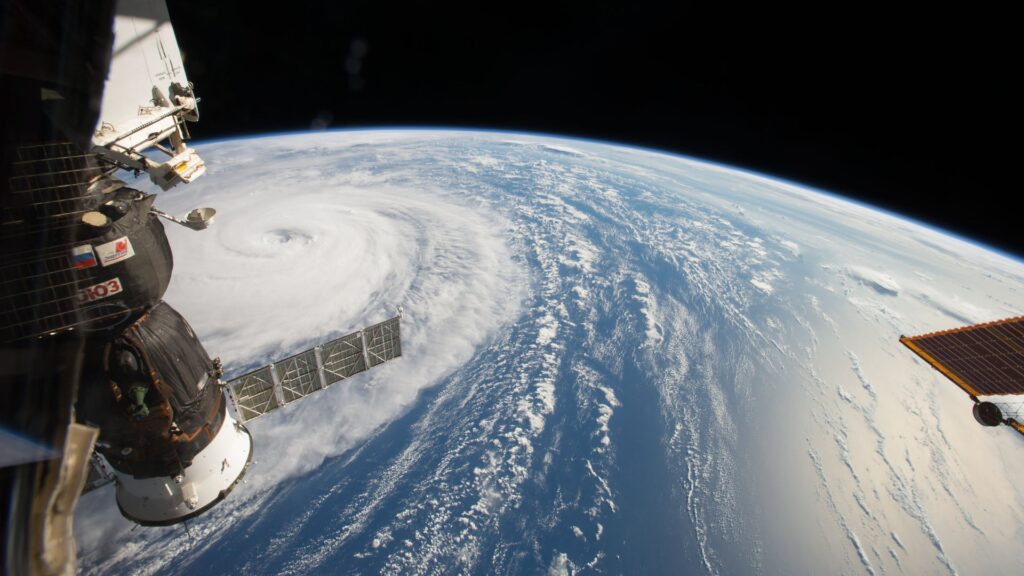
A very interesting fact is that Saturn is slowly losing its rings. I wish they recorded this session because there were so many interesting facts that I wanted to jot down! Caleb said that at one point, our galaxy, the Milky Way, will collide with our neighboring galaxy, Andromeda. We were a little alarmed when we heard this. But he told us not to worry as this is predicted to happen in three billion years.
I loved learning about Mars! This planet is home to the largest canyon in the solar system. It’s called Valles Marineris, and it’s ten times deeper than the Grand Canyon!!
Once we made it to the observation site, we did the first round on the telescope, where we saw the craters of the waxing crescent moon up close and other galaxies.
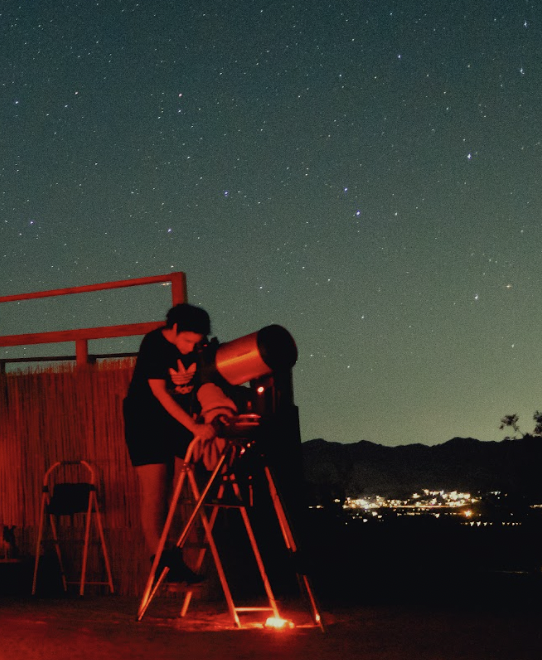
After that, we lay in our bean bags. Each of them had neatly folded blankets with binoculars placed on top. Not only was it a clear night, but the temperature was perfect. It was neither too hot nor too cold, and there was a very pleasant breeze.
Throughout the session, we saw shooting stars, satellites, constellations, and even Elon Musk’s Starlink satellites made a brief appearance. “For a second, I thought my eyes were playing tricks on me,” said Caleb. This photo is not from the tour, but here’s what they looked like.
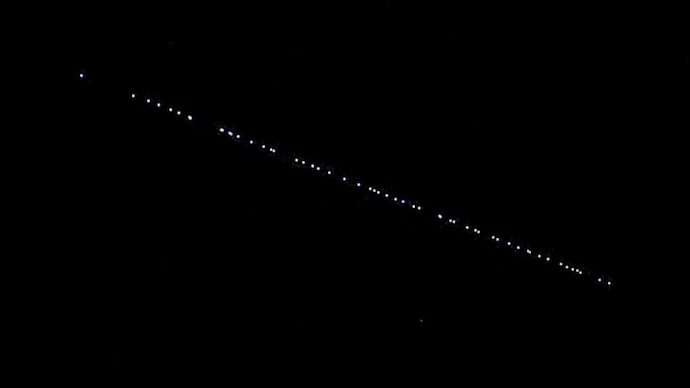
Did you know that the twinkling satellites that are orbiting the earth travel at 17.000 mph?
Caleb asked what our astrology signs were and pointed out to each of them. But the magic happened an hour into the session, when a faint white streak appeared across the sky – The Milky Way. It was breathtakingly beautiful.

The constellations were all named after Greek and Roman gods. It was interesting to hear why they each got their name as Caleb pointed them out. Like Devon said in the interview, it was a lot of information, but easily digestible for the general public. Caleb was also very engaging, which made it very easy to hold our attention during the two-hour tour.
Unfortunately, June was a time of the year when the planets were not visible at night. You had to get up very early to see them.
As the tour went on, the sky kept changing. The crescent moon that was so bright in the beginning of the tour was replaced by new stars and nebulas.
The telescopes did an impressive job capturing close-up shots of the starry whirls of galaxies. Here’s a picture of a globulal cluster.

My jaw dropped when Caleb said that the high-point laser could reach as far as the atmosphere and a plane! They had to be really careful because pointing a laser at an airplane is considered a federal crime, punishable by a hefty fine, and sometimes jail. If you google “laser pointers airplanes”, you’ll see that there have been a slew of arrests.
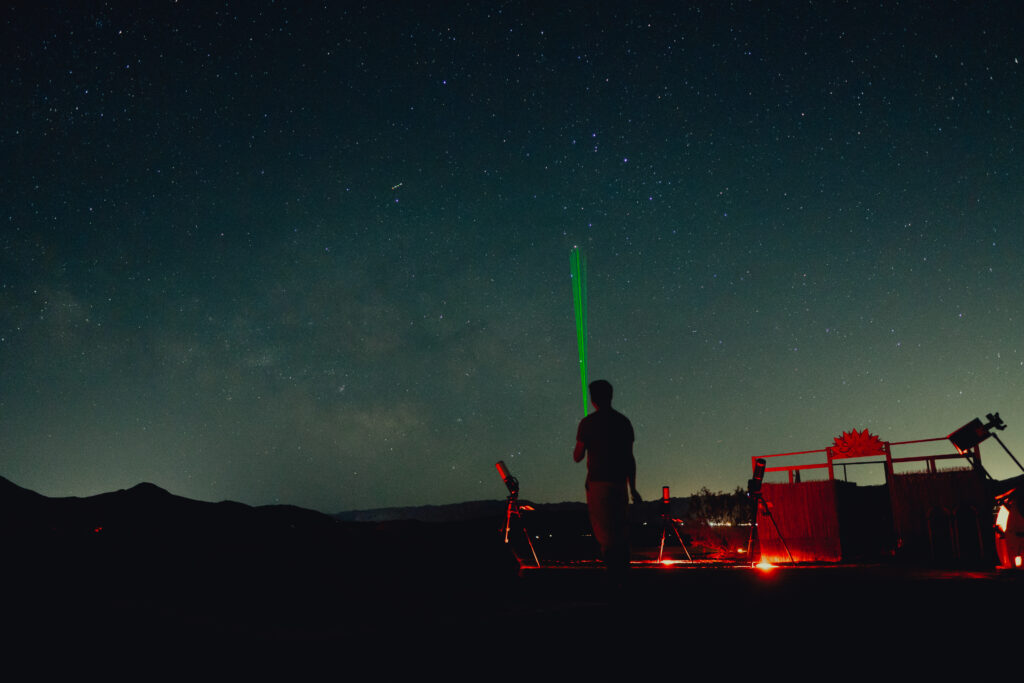
Caleb concluded the tour with a few mind-boggling facts about our planet since the beginning of time, and a very touching moral lesson. He talked about the societal rules that have been imposed on us, but how astrology had the power to give us a broader perspective on life.
He said something like: “The next time you feel overwhelmed by life, 9-5 jobs and societal pressures, drive away and look up at the sky. Remember that you’re not alone.” Truly, our day-to-day nuisances seem so minuscule compared to the vastness of the universe.
While we were laid down, Caleb told us to raise our thumb. He said: “Your thumb is covering 10 million galaxies right now.” If this wasn’t enough to wrap my head around, he took us back to the beginning. From the dinosaurs, who lived for 165 million years (like, what?) to the first Homo sapiens, to the impact of prolific astronomers, like Nicolaus Copernicus. We’ve come very far, and he emphasized how great and unique each of us is.
I left that tour with a renewed appreciation for our planet and a deep desire to know more about space.
When I got back to my Airbnb, I went down the rabbit hole of space facts: Andromeda galaxy, life inside the ISS (International Space Station), and how long it takes to travel to other planets in the Solar system. They all seem pretty close, right? Well, it would take almost 10 years to travel to Pluto and 8 years to travel to Jupiter.
I googled, “Is it possible for humans to travel to other galaxies?” Here’s the Google response:
“Andromeda, the closest real galaxy to our own, is some 2.5 million light years from us. Way too far to travel to. You’re looking at billions of years to travel that far.”
It’s unfathomable to grasp how ridiculously big space is. Every time I try to wrap my head around it, I end up having an existential crisis.
Stargazing Joshua Tree is a tour that I’d highly recommend to anyone visiting Joshua Tree. Constellations and planets are always changing positions in the sky, so a stargazing tour in the summer will be very different from a stargazing tour in the fall or winter. Even if you’re not into astronomy, you’ll leave with a better understanding of the Universe and hopefully, the tour will pique your curiosity to learn more about it.
Three weeks ago, it was a clear summer night in LA. I stepped out to take out the trash and saw some twinkling stars in the distance. Every time I look up at the night sky, I’m transported to that magical night.
Important Notes
⭐ There are no restrooms on the tour, so please plan accordingly.
⭐ If there’s inclement weather that day, the tour will be rescheduled. You can also request for a refund.
⭐ During winter, the tour starts at 5:30-6pm.
⭐ If you google Stargazing Joshua Tree, there are a few companies that will come up. The correct website address is StargazingJTree.com
⭐ The next day, you will be sent a link to a Google Drive folder where you’ll be able to see all the pictures that were taken the night of your tour!
Stargazing Joshua Tree: Website and Instagram





